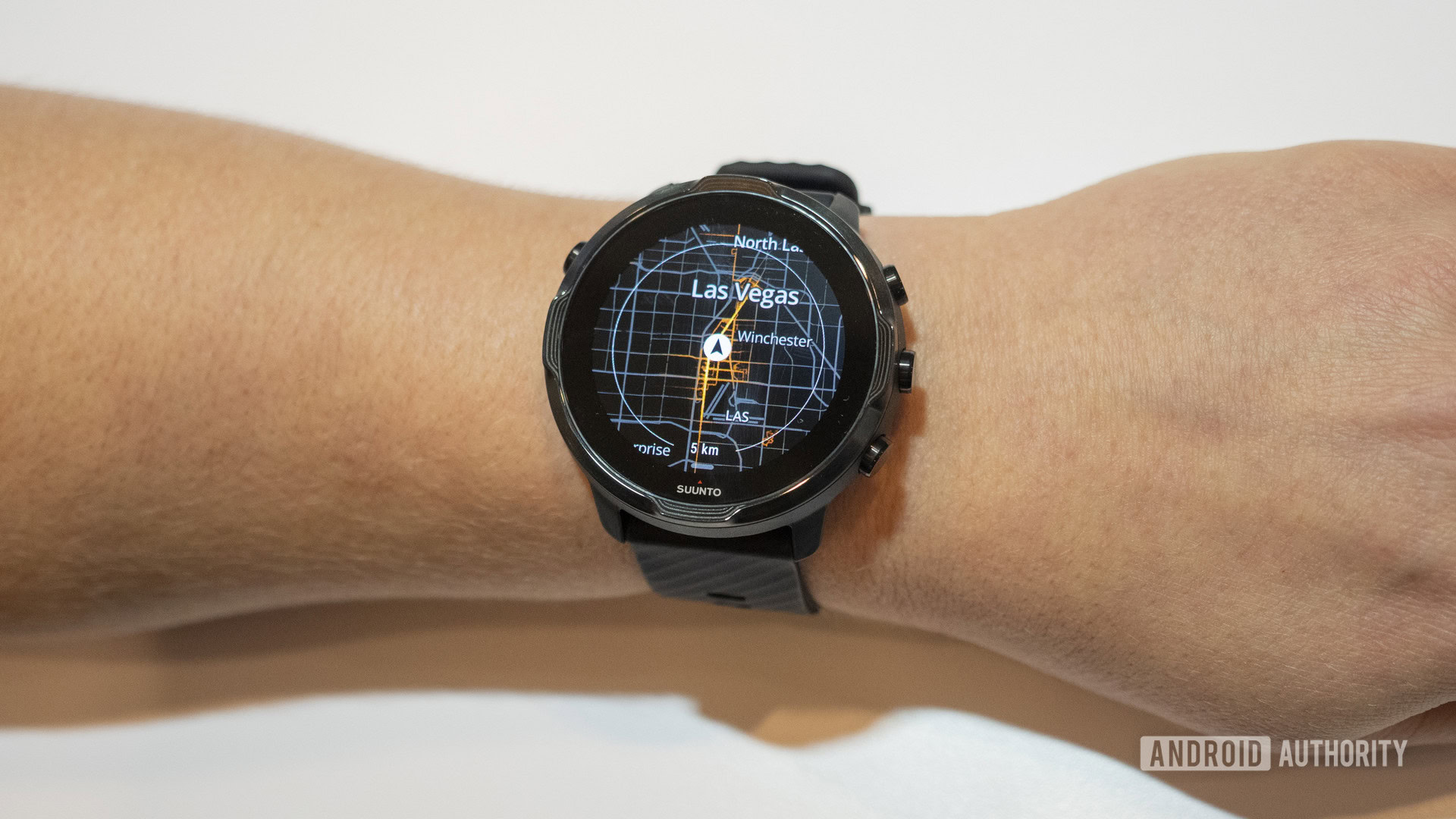Affiliate links on Android Authority may earn us a commission. Learn more.
Hands-on: The Suunto 7 is packed with features for serious outdoor enthusiasts

Suunto, a Finnish company known for making some of the finest sports watches you can buy, has just announced its very first Wear OS watch, the Suunto 7. It’s pricey, but it has the most top-of-the-line features you can expect from any Wear OS watch right now.
Before you ask, yes, the Suunto 7 is powered by the Snapdragon Wear 3100 SoC and has 1GB of RAM. That’s about the bare minimum we expect Wear OS watches to have in order to run the software smoothly — anything less spells poor performance. Elsewhere, you get ~4.5GB of user accessible storage for music and apps, as well as Google Pay support. There’s no LTE model available, so you’ll need to rely on a Bluetooth or Wi-Fi connection to reach your phone.
Full review: Suunto 7: You win some, you lose some
However, that may not be an issue. The biggest selling point of the Suunto 7 is its sporty nature, and Suunto really packed this watch full of outdoor features. It has a built-in GPS with support for offline outdoor maps, as well as support for Suunto Heatmaps — frequently traveled paths by Suunto users — across 15 different activities. A barometric altimeter and optical heart rate sensor round out its sensors.
The benefit of using a non-Wear OS smartwatch is that they’re usually able to last much longer on a charge (Wear OS is very power hungry). The company says the Suunto 7 will last 12 hours in GPS mode and 48 hours in normal use. That’s a far cry from other GPS watches like the Suunto 5 and Garmin Forerunner series, but on par with what other Wear OS champions offer.

The watch has a total of four buttons around the case: one on the left, three on the right. The top left is the home button; the top right opens the Suunto app; the middle and bottom-right buttons are both customizable. Personally, I love smartwatches with physical buttons (I don’t like messing with touchscreens while running) so I’m happy to see plenty of buttons here.
I was able to try out the Suunto 7 at CES in a brief demo. It’s a big watch — I have pretty normal sized wrists and the Suunto 7 is almost too big for my liking. It’s light for its size though at 70 grams. It also feels super durable, as it’s made of stainless steel and glass fibre-reinforced polyamide. Despite its size, it was quite comfortable to wear. It’s clear Suunto really thought a lot about design and comfort with the 7.
If you’re interested and want to pick one up for yourself, the Suunto 7 goes on sale Friday, January 31 for $499. It’ll be sold on Suunto.com, Amazon, in REI stores and online, and on Clevertraining.com.
Suunto isn’t trying to appeal to the average user with its new Wear OS watch. The average user, or really anyone else who wants a Wear OS watch for everything but fitness, should probably buy the Fossil Gen 5.
Rather, the Suunto 7 is for people who want a GPS outdoor watch but don’t want to sacrifice on smartwatch features. In the past, Suunto, Garmin, Fitbit, and Polar have focused on beefing up their own operating systems to play catch up to Wear OS and Watch OS. Since Google’s ecosystem already has the difficult stuff covered (mainly app partnerships), it was a smart move for Suunto to jump onboard with Wear OS.